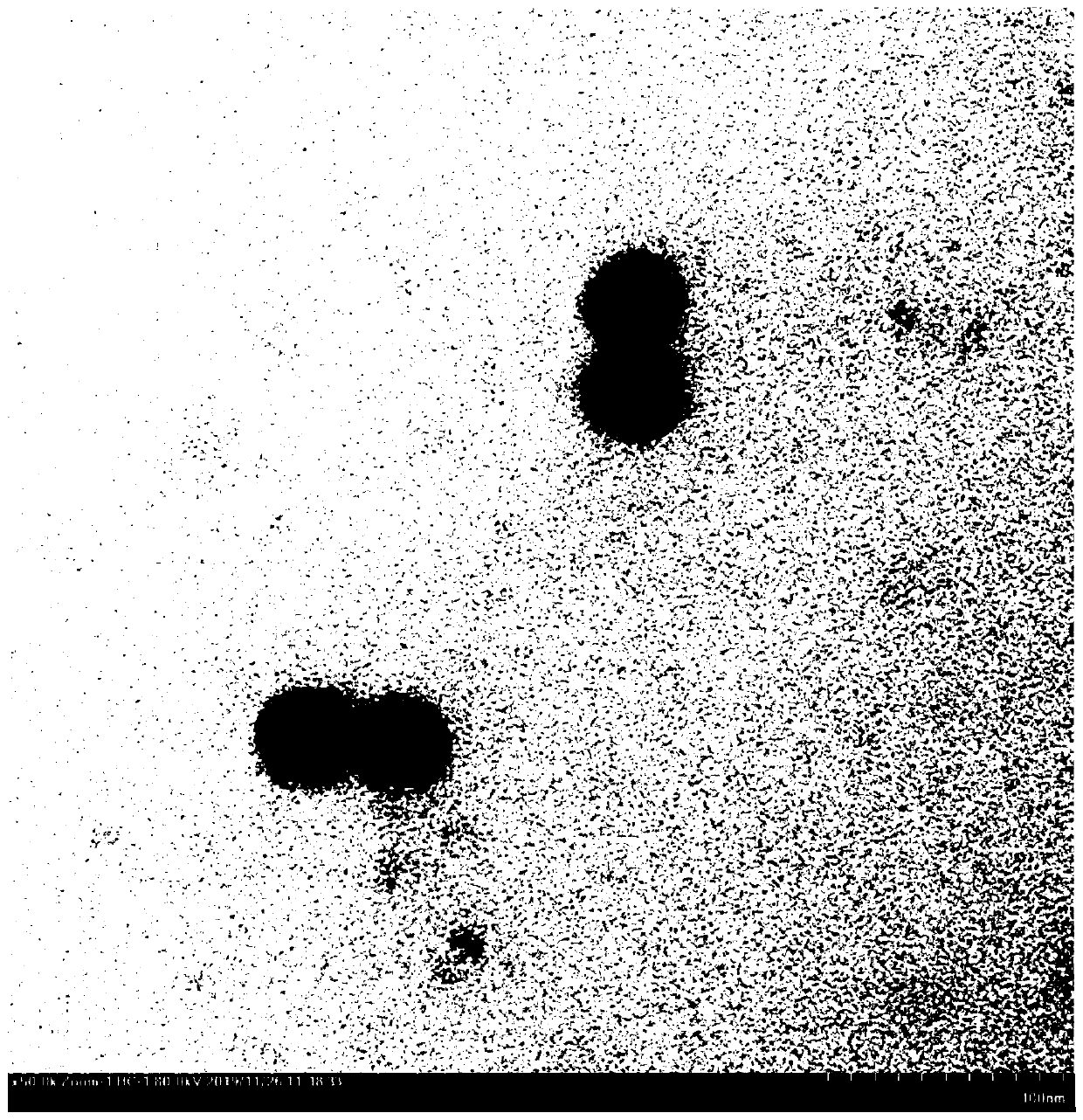Method for increasing oxygen production by blue algae endocytosing up-conversion nanoparticles
A nanoparticle and oxygen production technology, applied in the field of medical materials to achieve the effect of increasing oxygen production
- Summary
- Abstract
- Description
- Claims
- Application Information
AI Technical Summary
Problems solved by technology
Method used
Image
Examples
Embodiment 1
[0023] Comparison of oxygen production between cyanobacteria and cyanobacteria composites after upconverting nanoparticles co-cultured with cyanobacteria. Including the following steps:
[0024] 1) Detection of fluorescence spectra of upconversion nanomaterials.
[0025] 2) Co-cultivate the upconverting nanoparticles and cyanobacteria, and detect the luminescence of the cyanobacteria after the OD value of the growth concentration of the cyanobacteria reaches 2.
[0026] 3) Detect the oxygen production of cyanobacteria under near-infrared 808nm irradiation.
[0027] 4) Detect the oxygen production of the cyanobacteria that have phagocytosed into the upconverting nanomaterial under near-infrared 808nm irradiation.
Embodiment 2
[0029] Oxygen production of cyanobacteria after co-cultivation of upconverting nanoparticles and cyanobacteria and tumor changes after intratumoral injection. Including the following steps:
[0030] 1) Detection of fluorescence spectra of upconversion nanomaterials.
[0031] 2) Co-cultivate the upconverting nanoparticles and cyanobacteria, and detect the luminescence of the cyanobacteria after the OD value of the growth concentration of the cyanobacteria reaches 4.
[0032] 3) Detection of oxygen production of cyanobacteria under near-infrared 808nm irradiation
[0033] 4) Detect the oxygen production of the cyanobacteria that have phagocytosed into the upconverting nanomaterial under near-infrared 808nm irradiation.
Embodiment 3
[0035] Oxygen production of cyanobacteria after co-cultivation of upconverting nanoparticles and cyanobacteria and tumor changes after intratumoral injection. Including the following steps:
[0036] 1) Detection of fluorescence spectra of upconversion nanomaterials.
[0037] 2) Co-cultivate the upconverting nanoparticles and cyanobacteria, and detect the luminescence of the cyanobacteria after the OD value of the growth concentration of the cyanobacteria reaches 6.
[0038] 3) Detect the oxygen production of cyanobacteria under near-infrared 808nm irradiation.
[0039] 4) Detect the oxygen production of the cyanobacteria that have phagocytosed into the upconverting nanomaterial under near-infrared 808nm irradiation.
[0040] Such as figure 1 Shown: the change of oxygen production of cyanobacteria after co-cultivation of upconversion nanomaterials and cyanobacteria;
[0041] Such as figure 2 Shown: TEM of upconverting nanoparticles.
PUM
 Login to View More
Login to View More Abstract
Description
Claims
Application Information
 Login to View More
Login to View More - R&D
- Intellectual Property
- Life Sciences
- Materials
- Tech Scout
- Unparalleled Data Quality
- Higher Quality Content
- 60% Fewer Hallucinations
Browse by: Latest US Patents, China's latest patents, Technical Efficacy Thesaurus, Application Domain, Technology Topic, Popular Technical Reports.
© 2025 PatSnap. All rights reserved.Legal|Privacy policy|Modern Slavery Act Transparency Statement|Sitemap|About US| Contact US: help@patsnap.com


